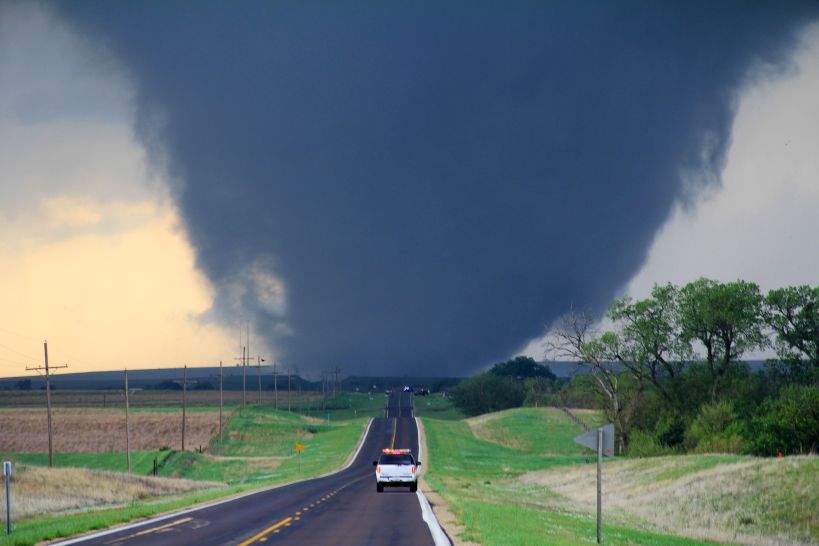Tornado
Violently rotating column of air
Tornado ▸ Facts ▸ Comments ▸ News ▸ Videos

A tornado is a violently rotating column of air that is in contact with the surface of Earth and a cumulonimbus cloud or, in rare cases, the base of a cumulus cloud. It is often referred to as a twister, whirlwind or cyclone, although the word cyclone is used in meteorology to name a weather system with a low-pressure area in the center around which, from an observer looking down toward the surface of the Earth, winds blow counterclockwise in the Northern Hemisphere and clockwise in the Southern Hemisphere. Tornadoes come in many shapes and sizes, and they are often visible in the form of a condensation funnel originating from the base of a cumulonimbus cloud, with a cloud of rotating debris and dust beneath it. Most tornadoes have wind speeds less than 180 kilometers per hour, are about 80 meters across, and travel several kilometers before dissipating. The most extreme tornadoes can attain wind speeds of more than 480 kilometers per hour (300 mph), can be more than 3 kilometers (2 mi) in diameter, and can stay on the ground for more than 100 km (62 mi).
| 0 shares | ShareTweetSavePostSend |
![Tornadoes Rip Through Texas Near Lubbock, Injuring 3 And Leaving Thousands Without Power In Chaos [Video]](https://video.newsserve.net/300/v/20250606/1413148784-Tornadoes-Rip-Through-Texas-Near-Lubbock-Injuring.jpg) Tornadoes Rip Through Texas Near Lubbock, Injuring 3 And Leaving Thousands Without Power In Chaos Credit: Oneindia Duration: 03:09Published | |
![Tornado leaves trail of destruction in Puerto Varas [Video]](https://video.newsserve.net/300/v/20250527/1412076128-Tornado-leaves-trail-of-destruction-in-Puerto-Varas.jpg) Tornado leaves trail of destruction in Puerto Varas Credit: euronews (in English) Duration: 01:00Published | |
You Might Like
'Absolute disaster': Tornado leaves trail of destruction in wake of Storm GerritHomes have reported damage after an "intense" tornado struck an area of Greater Manchester last night.Sky News - Published |
| Search this site and the web: |
